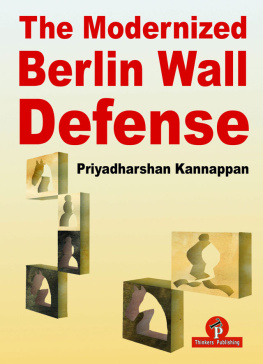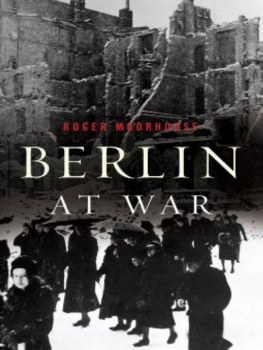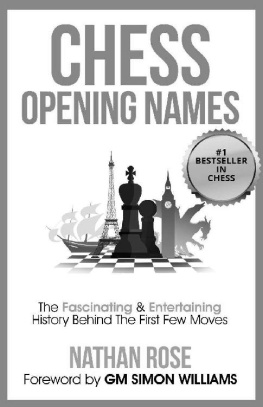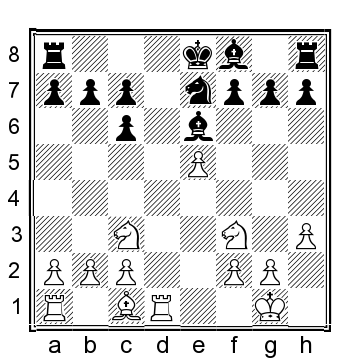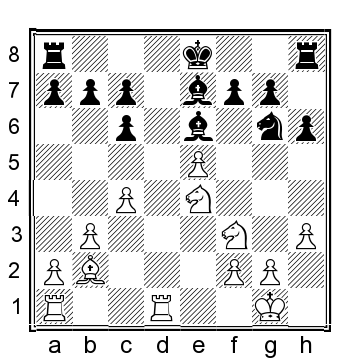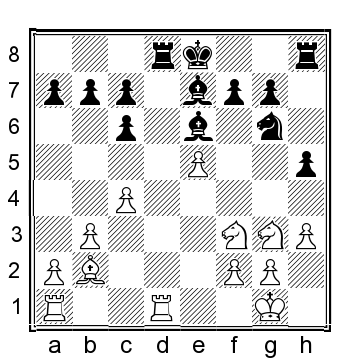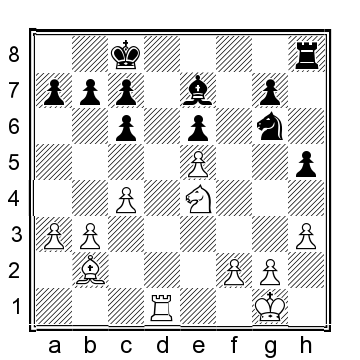Table of Contents
Title page
Key to Symbols
Foreword by Susan Polgar
Preface
Chapter 1 Alternatives on Move 4
Chapter 2 The Four Knights Variation
Chapter 3 Lines without 5.d4
Chapter 4 Lines without 6. B xc6
Chapter 5 The Endgame
Chapter 6 The 4.d3 System
Appendix 100 Games to Help You Understand the Berlin Endgame
The Modernized Berlin Defense
by
Priyadharshan Kannappan
Thinkers Publishing 2019

www.thinkerspublishing.com
First edition 2019 by Thinkers Publishing
Copyright 2019 Priyadharshan Kannappan
All rights reserved. No part of this publication may be reproduced, stored in a retrieval system or transmitted in any form or by any means, electronic, mechanical, photocopying, recording or otherwise, without the prior written permission from the publisher.
All sales or enquiries should be directed to Thinkers Publishing, 9850 Landegem, Belgium.
Email: info@thinkerspublishing.com
Website: www.thinkerspublishing.com
Managing Editor: Romain Edouard
Assistant Editor: Danil Vanheirzeele
Typesetting: Mark Haast
Proofreading: Ian Marks
Software: Hub van de Laar
Cover Design: Iwan Kerkhof
Graphic Artist: Philippe Tonnard
Production: BESTinGraphics
ISBN: 9789492510662
D/2019/13730/11
Key to Symbols
! | a good move |
? | a weak move |
!! | an excellent move |
?? | a blunder |
!? | an interesting move |
?! | a dubious move |
only move |
N | novelty |
lead in development |
zugzwang |
= | equality |
unclear position |
with compensation for the sacrificed material |
White stands slightly better |
Black stands slightly better |
White has a serious advantage |
Black has a serious advantage |
+ | White has a decisive advantage |
+ | Black has a decisive advantage |
with an attack |
with initiative |
with counterplay |
with the idea of |
better is |
worse is |
+ | check |
# | mate |
Foreword
I came to know about Priyadharshan or, as I call him, PD, for the first time in 2011. Over the years I continued to keep track of his progress. He became a valuable member of the SPICE program between 2016 and 2018.
PD is a very passionate chess lover, and contributed in any way possible to the team, like running the chess club, managing an online league, writing articles for leading chess magazines, commentating on games and so on.
In addition, he often played the role of a second, working on opening ideas for the Webster chess team, and openly shared his knowledge for the greater good of his team mates. I also know that he has personally worked with some 2650-2700+ players, exchanging opening ideas on a regular basis. His knowledge of his favorite openings is top-notch and his curiosity to experiment with openings is truly commendable.
The Berlin Defense is an opening system PD is very familiar with, and I am very confident that his knowledge will be invaluable to anyone who wants to master this incredibly solid opening.
I am very happy that he has put his knowledge of and love for chess into writing a book on the Berlin Defense. I wish Priyadharshan the best of success, and hope that readers will get to learn about an opening that can be played at all levels for life!
Sincerely,
Susan Polgar
Preface
This books journey began on the first day of January 2018 when one of my New Year resolutions was to write a chess book. The journey has been very long, but certainly fun, and has in many ways made me understand myself better, both as a person and as a chess player!
If it has taken a long time, you also have to know the distance the book has covered! It has travelled 14,130 km, as the first page was written when I was about to complete my Masters degree at Webster University in St Louis in the USA, and now, as I write my preface, I am a full-time chess trainer, currently living in Bengaluru, India.
So how did I fall in love with this beautiful Berlin Defense? In mid-2003, when I was preparing for the World U-10 Championship, I found that my Philidor Defense wasnt good enough to be played in a tournament of such stature, and my coach at the time, IM Raja Ravi Sekhar, suggested the Berlin to me as it was at the peak of its popularity after the 2001 World Championship match between Kasparov and Kramnik.
The Berlin was a good fit for me then, as it didnt have extensive theory (unlike now!) and the lines given in ECO were simple and easy to remember, which made me very happy, as I never really enjoyed memorizing moves in the opening.
My first-ever Berlin game was against the now GM Gil Popilski from Israel, and you must certainly see why I got hooked on this line:
Popilski, Gil
Priyadharshan, K. (2063)
Halkidiki 2003
1.e4 e5 2. N f3 N c6 3. B b5 N f6 4.0-0 N xe4 5.d4 N d6 6. B xc6 dxc6 7.dxe5 N f5 8. Q xd8+ K xd8 9. N c3
Position after: 9. N c3
I remember taking some time when I reached this position, and then played a natural-looking but not so precise move.
9... B e6!?
9... K e8 10. R d1 N e7 11.h3 - (44) Csiba, T (2065) Willow, M (2270) ICCF email 2013
10. R d1+
10. N g5!? K e7 11.f4 h5 12.b3 R d8 13. N ce4 B c8 14. B b2 K e8 15. K f2 B e7 16. R ad1
10... K e8 11.h3
11. N g5 B c8 12. N e2 B e7 13. N e4 b6
11... N e7?!
Position after: 11... N e7?!
New move.
12. N e4
12. N d4 R d8 13. B g5 B c8 14. N e4 R d7 15.e6 fxe6 16. N c5 R d6 17. B f4 e5 18. B xe5 Black needs to be precise to hold this position. - (44) Csiba, T (2065) Willow, M (2270) ICCF email 2013
12... N g6 13.b3
White has an edge.
13... B e7 14.c4 h6?
14... R d8
15. B b2?!
15. N d4
Position after: 15. B b2?!
15... R d8?!
15...c5
16. N g3
White is threatening to occupy the h5-square from where the white knight would exert great influence on the kingside.
16. N d4
16...h5!
Position after: 16...h5!
Prophylaxis.
17. N d4 B c5?!
17... N f4 18. N gf5 B xf5 19. N xf5 R xd1+ 20. R xd1 N e6=
18. N xe6 fxe6 19. N e4 B e7 20. R xd8+ K xd8 21. R d1+ K c8 22.a3
Next page
